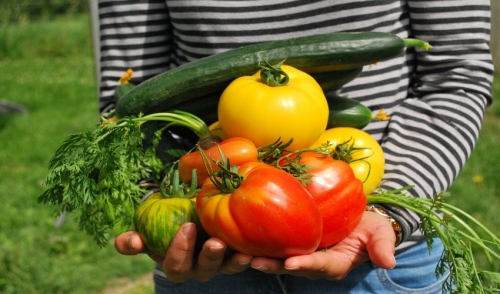
Vegetables to Plant in Midsummer
Planting in midsummer is all about thinking ahead for a great fall harvest. Season gardeners understand the importance of starting early and always planning ahead. Planting takes time and patience in all aspects of gardening. You can’t just throw some seeds in the ground and expect something to be there next week. Midsummer is the time to plant your juicy lettuces, cool season aromatic herbs like basil, dill, garlic, and parsley, and your hearty greens like chard and kale. Many people would consider this the second season because it’s the second time you will plant vegetables for harvesting before the winter and frost sets in. Follow this article for tips and tricks on what to plant in mid July for a fall harvest that will blow your mind.
Some crops will take longer than others so be sure to plan accordingly. Always plant your root crops first. These crops include globe onions, carrots, and beets. This also includes certain leaf crops like fava beans, brussell sprouts, cabbages, and cauliflower. One of the best things about planting greens is that you can rotate through a huge variety of leafy crops. From spring to even late fall you can plant nutritious, green vegetables for you and your family. Leafy vegetables can be harvested at many stages so don’t be afraid to harvest these crops at different times throughout the year, even as close to the first frost. Even though some crops need to be planted earlier in the summer some mid summer vegetables can be planted a little later. There are many vegetables that only need 30-60 days to harvest. These crops include turnips, swiss chard, collards, radishes, broccoli, spinach, and other leaf lettuces. Crops like broccoli and spinach can be planted as late as September depending on your area. Crops that are planted later in the season also have less competition from other weeds and pest so they grow better with less care and garden work.
When you start planting, plant your vegetables in an area of your garden with medium to light sun. Basically, plant your seeds wherever they can germinate properly out of the beating sun of summer, but still have plenty of light to flourish. Use soil that is well prepared and water during the evenings so that the vegetable can fully absorb their nutrients. Don’t be afraid to shelter your crops if you notice the temperature rising higher than normal.
Keep in mind midsummer gardening is only successful if you are aware of the average date in which the first frost will occur in your area. Many of these crops described may survive the first frost or colder temperatures in the fall, but no vegetable can survive the harshness of the winter. It may sound cliché, but winter is coming and every gardener needs to prepare. Your vegetables will need to be planted early enough so that they can reach their full maturity before the frost arrives. Your options are endless and the season is bound to be fruitful. Take advantage of the second season so that you have fully grown, ready to pick vegetables that will store and sustain themselves this fall.
